NASA is set to launch a groundbreaking space telescope named SPHEREx (Spectro-Photometer for the History of the Universe, Epoch of Reionization, and Ices Explorer). This new mission will complement the James Webb Space Telescope (JWST) by offering a comprehensive all-sky survey in infrared light. Expected to launch no earlier than February 27, 2025, SPHEREx aims to map the universe in unprecedented detail, providing insights into cosmic evolution, galaxy formation, and the essential ingredients of life.
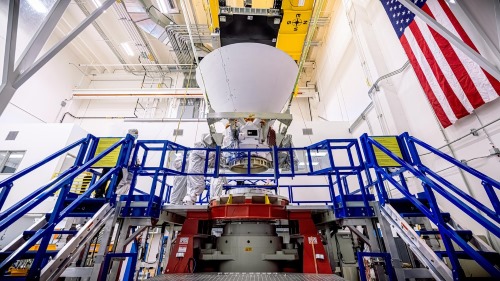
Source:BAE Systems/NASA/JPL-Caltech
Our new sky-mapping space telescope SPHEREx takes shape, our PACE mission to monitor Earth's climate and oceans gets ready for launch, and the #Artemis II astronauts get a look at their Moon rocket's core stage. Get more space in your inbox: https://t.co/MyG37QzGhO pic.twitter.com/cABbs1dtOc
— NASA (@NASA) November 25, 2023
Comparison: SPHEREx vs. James Webb Space Telescope (JWST)
| Feature | James Webb Space Telescope (JWST) | SPHEREx |
| Launch Date | December 25, 2021 | February 27, 2025 (Planned) |
| Observing Mode | Deep space observations | All-sky survey |
| Target | Specific nebulas, galaxies, and exoplanets | Entire sky, 450 million galaxies, 100 million stars |
| Technology | High-resolution infrared imaging | Spectroscopic infrared mapping |
| Data Collection | Focused on small, detailed regions | Wide-scale cosmic mapping |
| Primary Objective | Study the formation of stars, planets, and galaxies | Understand the cosmic history and search for life-building molecules |
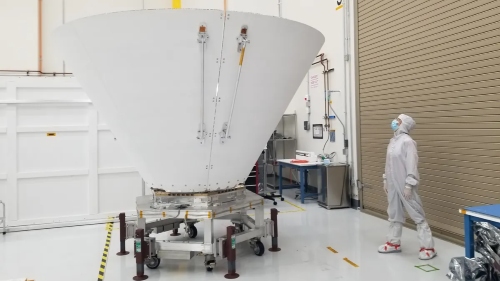
Source: NASA/JPL-Caltech
Also Read| What are the Top Inventions done by NASA?
Also Read| What is Black Hole? Check Facts and Formations About Black Hole
What are the Key Objectives of the SPHEREx space telescope?
- Understanding Cosmic Inflation: The universe expanded at an extreme rate after the Big Bang. SPHEREx will map over 450 million galaxies to study how this inflation shaped cosmic structures.
- Measuring the Total Light from Galaxies: Instead of focusing on individual galaxies, SPHEREx will estimate the collective glow from all galaxies, even those too faint to be detected by other telescopes.
- Searching for Life’s Ingredients: The telescope will identify water and organic molecules in interstellar clouds and planet-forming disks, helping scientists understand the building blocks of life.
- Providing the Most Colorful Sky Map: SPHEREx will observe the sky in 102 infrared colors, far surpassing previous all-sky surveys in color resolution.
- Supporting Future Missions: Data from SPHEREx will help identify potential targets for in-depth studies by JWST, Hubble, and future space telescopes.
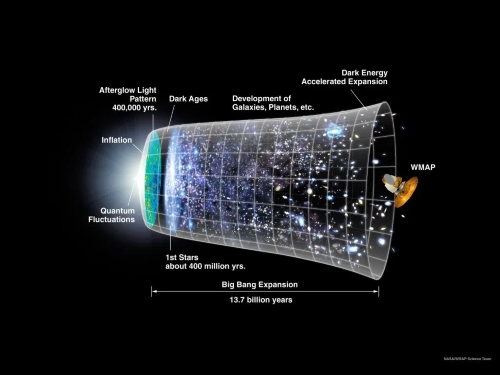
Source:NASA/JPL-Caltech
SPHEREx Mission Overview
SPHEREx (Spectro-Photometer for the History of the Universe, Epoch of Reionization, and Ices Explorer) is a groundbreaking mission aimed at conducting the first all-sky spectral survey. During its planned two-year mission, the SPHEREx Observatory will gather data from over 450 million galaxies and more than 100 million stars within the Milky Way. This ambitious project seeks to investigate the universe's origins, particularly focusing on the epoch of reionization and the role of ices in the cosmos.
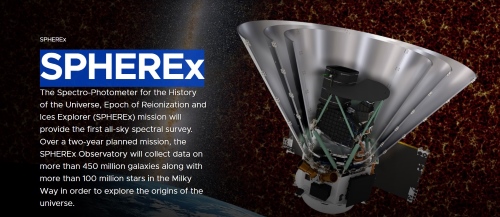
Source: NASA/JPL-Caltech
| Feature | Details |
| Mission Type | Orbiter |
| Primary Target | Stars and Galaxies |
| Launch Site | Vandenberg Space Force Base, California |
| Operational Period | Two Years |
| Technology Used | Infrared Spectroscopy |
| Observation Cycle | Completes full-sky survey every 6 months |
What makes SPHEREx a unique design and technology among space telescopes?
Designs and technology which is used to make unique Space Telescope is:
- Spectroscopic Infrared Mapping: Unlike traditional telescopes that capture visible images, SPHEREx will use infrared light to map the cosmos in fine detail.
- Passive Cooling System: To prevent interference from its heat, the telescope will operate at -210°C (-350°F) using a cone-shaped photon shield to deflect heat into space.
- Cone-Shaped Design: This distinctive shape allows the spacecraft to maintain stable temperatures and see faint cosmic objects without distortion.
- International Collaboration: Developed by NASA’s Jet Propulsion Laboratory (JPL), Caltech, BAE Systems, and multiple international institutions, including South Korea and Taiwan.
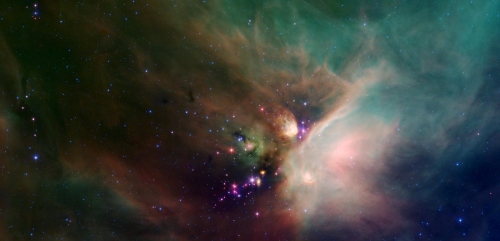
Source: NASA/JPL-Caltech
Also Read| Who is Shubhanshu Shukla? India's 1st Astronaut to Set Pilot for Axiom Mission 4 to ISS
How SPHEREx Will Transform Astronomy?
1. Unlocking the Secrets of the Early Universe
- SPHEREx will map the distribution of galaxies to provide insights into the universe’s first trillion-trillionth of a second.
- The data will help refine our understanding of cosmic inflation, one of the biggest mysteries in astrophysics.
2. Mapping the Entire Sky in Unprecedented Detail
- The telescope will survey the entire sky every six months and compile a 3D map of the universe.
- It will analyze the distribution of galaxies, helping scientists understand the formation of cosmic structures.
3. Searching for Life-Building Molecules
- SPHEREx will scan molecular clouds and planet-forming disks for water ice, carbon dioxide, and other organic molecules.
- This will help astronomers understand how these compounds contribute to planet formation and the possibility of life beyond Earth.
4. Supporting Next-Generation Space Missions
- The telescope will identify promising targets for high-resolution studies by James Webb, Hubble, and future observatories.
- It will bridge gaps in current data, ensuring that future telescopes can focus on high-priority celestial objects.
Conclusion
SPHEREx represents a major leap forward in space exploration. Conducting an all-sky infrared survey, will provide astronomers with an unparalleled dataset to study the origins of the universe, the formation of galaxies, and the potential for life in distant worlds. With its planned launch in February 2025, this mission will be a crucial addition to NASA’s fleet of space observatories, complementing the highly focused observations of telescopes like JWST and Hubble.
SPHEREx is not just another telescope—it is a revolutionary tool that will reshape our understanding of the cosmos.
Comments
All Comments (0)
Join the conversation